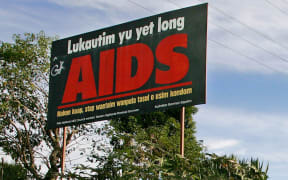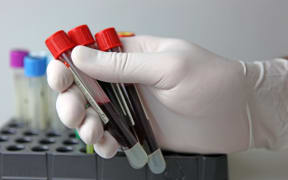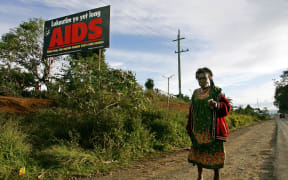HIV/AIDS was the poster child of issues confronting Papua New Guinea ten years ago.
But since then it's faded somewhat from public discourse, as other problems like corruption took precedence, and other health crises such as TB surged back.
However, HIV takes no heed of fashion and during this time prevalence of the virus in PNG has been climbing.
According to the UNAIDS office in PNG, latest statistics estimated that almost 47,000 people were infected with HIV in a country whose population is about 8 million.
From a prevalence rate of 0.7 percent in 2015, estimates released last week put it at 0.91 percent.
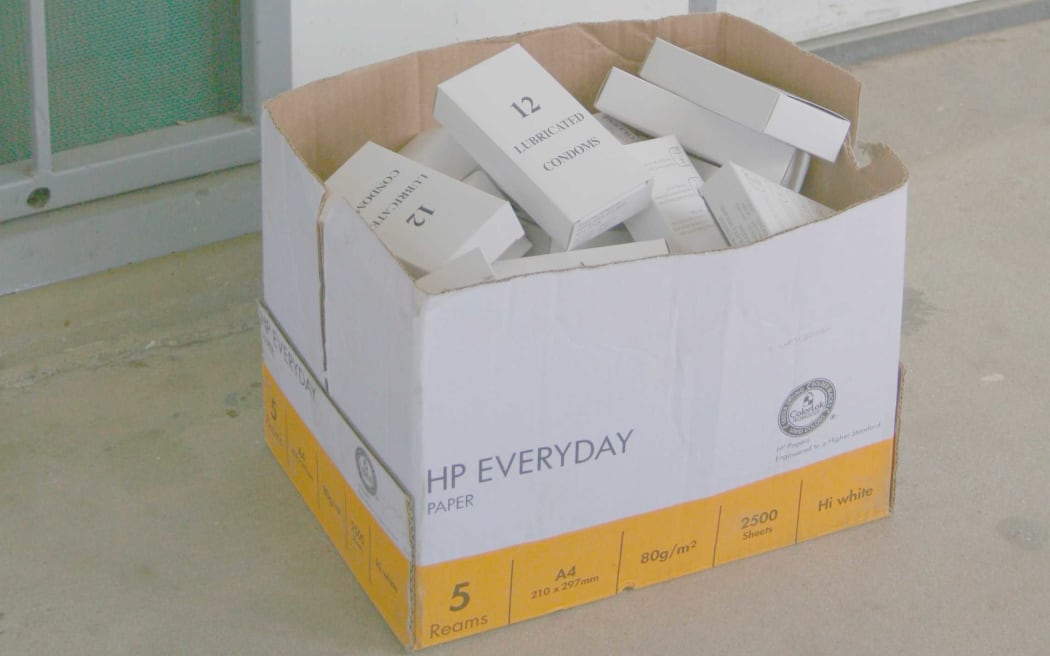
Box of condoms laying idle at Port Moresby General Hospital, Papua New Guinea. Photo: RNZI / Johnny Blades
Of the roughly 3000 confirmed new infections in the past year, nearly a quarter are children and youths, according to UNAIDS' PNG Country Director Stuart Watson.
"Contrary to the trends in many parts of the world, unfortunately Papua New Guinea - which does have roughly 95 percent of the epidemic burden in the Pacific region - is trending in the wrong direction."
He said that, coupled with problems in the delivery of health services in PNG, the problem was becoming acute.
"We've had some near and complete stock-outs of anti-retroviral medicines, we've had a complete stock-out of rapid-testing kits and many other supplies and commodities in the health system, so it means we're not able to test people," said Mr Watson.
"We're not getting people therefore on to treatment. Treatment is prevention."
People living with HIV in PNG still face stigmatisation, which was a another, traditional obstacle to treatment.
Prevention
The task of responding to HIV is formally spearheaded by the National AIDS Council, within the Department of Health, with a significant role also played in PNG's rural sphere by the churches.
However a lack of resources and issues including church aversion to promotion of condoms, as well as the complex administrative system across PNG's provinces, had hampered the response.
The National AIDS Council's Manager for Research Tony Lupiwa said the epidemic had been downgraded to a concentrated epidemic among key populations in certain provinces, particularly in the Highlands.
The Papua region in the southern part of PNG's mainland also has higher than average HIV prevalence.
Parliament was warned last November that while HIV had been contained in urban areas, it was rampant and out of control in rural areas
Mr Lupiwa said the key populations included female sex workers, wealthy businessmen, males who have sex with other males, and transgender people.
But the old ABC approach to HIV prevention of "Abstinence, Being faithful to partners, and Condom use (ABC)" had not been effective enough in curbing HIV prevalence.
People only have to look at various examples of PNG's political leaders who openly display relationships with multiple partners, to see that ABC is not consistently supported by role models.
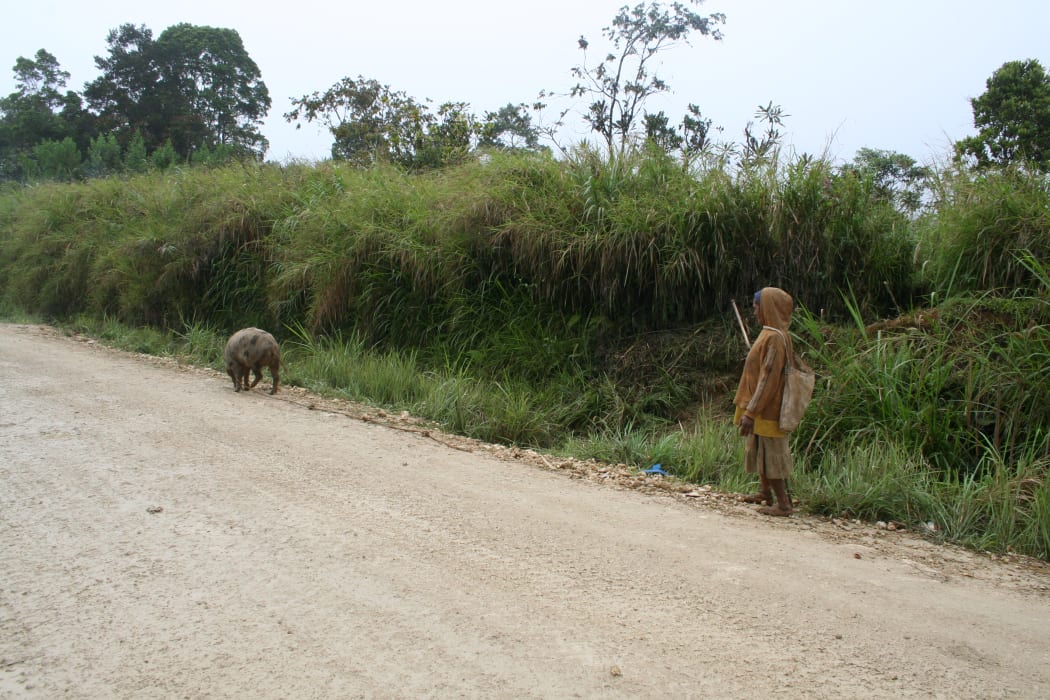
A woman and her pig, roadside, Hela Province, Papua New Guinea. Photo: RNZI / Johnny Blades
With the Department of Health looking for new forms of prevention, research into male circumcision by Engan academic Rachael Tommbe at James Cook University in Cairns is coming into consideration.
"The studies done up in the Highlands have shown that men who have full circumcision and (men who have partial) split, they both have possibility of protecting men from HIV, but that particular study needs to be done further, to look at the foreskin."
Some regions of PNG have significantly higher populations of circumcised males than others.
These regions, Ms Tommbe said, "have lower HIV prevalence than those regions who don't have any cutting in place".
Ms Tommbe said studies in Africa, however, confirmed that men with full, round circumcision had a better chance of protection than those with just a partial or longitudinal cut.
The WHO and UNAIDS agencies have recommended that countries with hetrosexual-driven AIDS epidemics and low male circumcision practices adopt medical male circumcision as a prevention strategy.
Funding blues
Tony Lupiwa said cuts in government funding meant HIV awareness had slowed down in recent years.
But with elections approaching, the Council was preparing for a fresh drive.
"In the past we have had increased number of cases after the elections, because (at) election time people are moving into the areas where the intending candidates are, and there's a lot of money and beer and drugs that result in unsafe sex."
Mr Lupiwa had a positive take on the prevalence rate.
Suspecting the increase is linked to wider data collection, he said the overall situation was improving, but there was still a lot of work to be done.
But PNG's health system was already struggling to cope with a resurgent TB problem, malaria and diarrhoeal diseases among other pressing problems.
"Probably if you spoke to people at the coalface, delivering the services, they would tell you that what they see walking into their clinics is probably much more serious than these numbers I'm giving you would indicate" Stuart Watson of the HIV situation said.
Given the constraints facing health services, the actual number of those infected in PNG is likely to be higher than 47,000.
The Global Fund for AIDS, TB and Malaria has been an important contributor to funding PNG's HIV response.
As well as the Department of Health, the Fund's recipient organisations in PNG have included a health charity established by Oil Search Limited, a major player in the country's oil and gas sector.
This has at times however been blighted by mismanagement of funds and corruption.
Distress at the UNAIDS office over the latest statistics suggests a need to refocus on the problem.
Mr Watson admitted that PNG was not the only country where HIV/AIDS had fallen off the main public agenda, as advances in science and treatments had made HIV more or less a manageable chronic condition.
"The rhetoric that we hear around the epidemic is that 'we know how to control it, we know how to treat it, we know how to manage it'. And so, to be perfectly honest, I think many of the donors and certainly ones that I deal with here in PNG are saying 'great, you know what you're doing, so we'll let you get on and do that, and we'll take our money and our priorities to other issues that are on our agenda'."
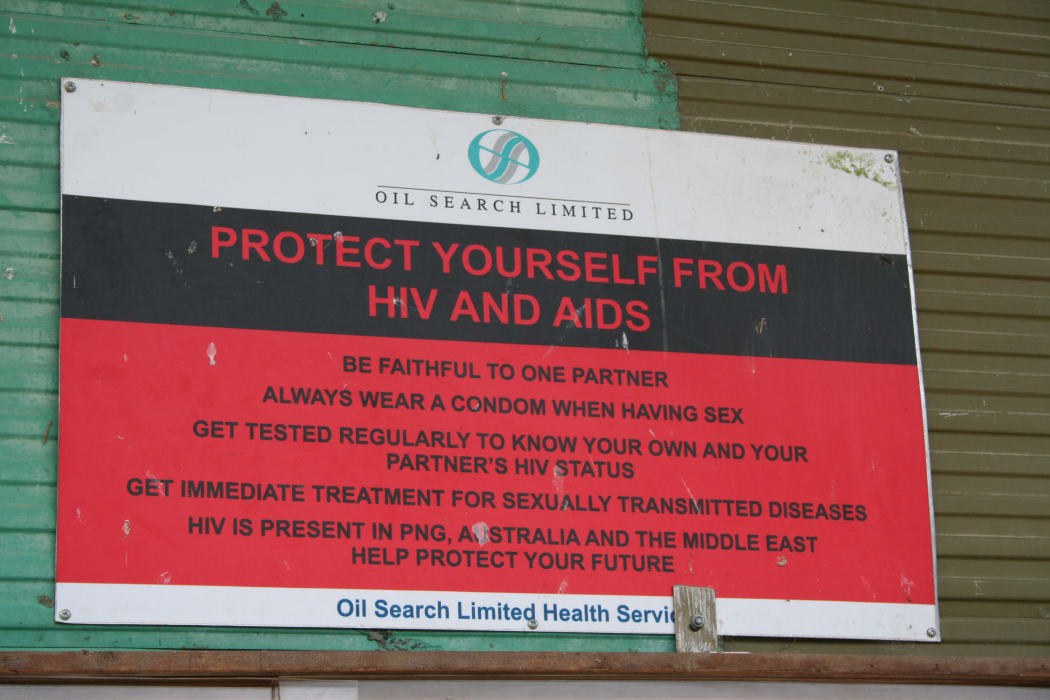
Oil Search-sponsored HIV AIDS awareness message in Papua New Guinea's Highlands. Photo: RNZI / Johnny Blades
Mr Watson said that for the last five years or so, around 3-quarters of financial resources for PNG's HIV response has come from donors, primarily Australia, but also New Zealand, the European Union and the UN.
"Now over the last year there's been quite a serious decline as pressure on donors for a number of the crises underway around the world has meant that PNG has seen less and less money for the national response and as a result we're just not able to keep up with the demand and the rapidly growing population, and issues and problems in the health system in general in PNG."
"We must not become complacent," Tony Lupiwa said.
"We have to continue to go out there and make that awareness, and make the condom available to everyone in the community to have access to it, not just condoms, but ART (Antiretroviral Therapy) available to those who are living with HIV."
PNG has a goal of providing 90 percent of HIV patients with anti-retroviral drugs by 2020 - currently it's at around 55 percent.
It will be a steep challenge, given the dearth of resources for public health in PNG.
